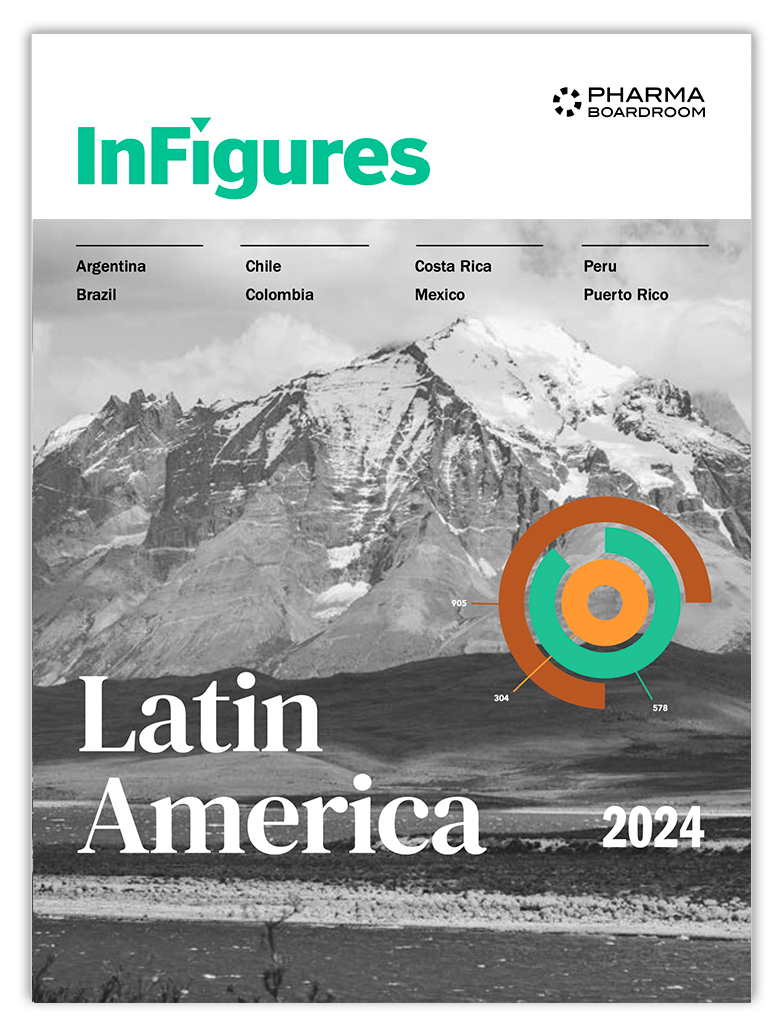Bill Doherty, MD of Cook Ireland and EVP of Cook Group Europe, one of the largest private medical device companies in the world, discusses his main priorities at the moment, the impact of the Group’s transformation on EMEA, his thoughts on the successful evolution of the Irish MedTech sector, and Cook Medical’s operations in Ireland.
Bill, as the MD of Cook Ireland and EVP of Cook Group Europe, managing Cook Medical’s Europe, Middle East and Africa (EMEA) operations, what is keeping you most busy at the moment?
There are certainly many things on my plate, but a major one would be the potential implications of the new European Union (EU) medical devices regulations (MDR). These new regulations have already been agreed by the European Council, Commission and Parliament and are now in the process of being translated into the final legal text. Once this is completed, it will set the regulatory landscape for the next ten or fifteen years, if not more, which will have a huge impact on the industry.
An important impetus behind this revision was the Poly Implant Prothèse (PIP) breast implants scandal in France a few years ago. Politicians felt that the system needed to be changed given the outrage in Europe following this incident. Ultimately, this was a case of fraudulent behavior that would be difficult to detect under any regulatory environment. At Cook, we share the same mission with global regulators to protect patients and further innovation; however, we need to make sure the regulations are fair to patients and to the sector. That said, until we have the final wordings and specifics, we do not know what the full impact will be.
What are your initial impressions of the revisions?
[Featured_in]
I think there was a concern under the old Medical Devices Directive (MDD), that there was not a level playing field. Some notified bodies, which are authorised by the competent health authorities in each country to monitor product safety, were more stringent than others, which meant that companies were conceivably able to choose a notified body that may have a lighter touch, so to speak. Had this weakness been addressed – and it was being addressed prior to the new MDR – we would have a better system in place.
All regulatory systems try to find a balance between patient protection and encouraging innovation by not placing those barriers so high that companies cannot meet them, which is very important. A notable issue with increased regulation is its impact on smaller companies. Larger companies have the scale and resources to deal with more regulation, while smaller companies may find that they have great ideas and products that cannot be launched or reach the market because of the level of testing and clinical evidence required. Funding is also a factor. Information and Communication Technology (ICT) start-ups can be funded with the prospect of a return on investment (ROI) within a year or two, but for a MedTech start-up, the ROI period may well be greater than ten years.
Looking across the Atlantic, the Food and Drugs Administration (FDA) has traditionally been the most demanding regulator, but in the last few years, they have certainly signaled an increased willingness to work with industry to find pathways to market for new technologies and products. In Europe, that open and collaborative spirit has always been present. For example, in Ireland, the Health Products Regulatory Authority (HPRA) is very willing to hear our concerns and consult with us, on top of fulfilling their responsibilities to patients and the public health; they would certainly be one of the more collaborative authorities within Europe. I hope the new MDR will still encourage that kind of collaboration between government and industry to ensure new products get to physicians and patients.
In terms of Cook Medical, globally the Group has undergone a transformation plan in the past few years. How has that affected the EMEA business?
[related_story]
Every company and indeed industry needs to re-invent itself over time; the Swiss watch industry is a good example. Transformation is typically triggered by an outside event and for Cook, that catalyst was a 2014 FDA warning letter to our Bloomington, US site. While it did not immediately impact our European manufacturing sites here in Limerick and Denmark, the Bloomington plant is the biggest manufacturing site for the Group and also the Group’s headquarters, so the Group decided to undertake a global assessment.
The idea behind this is to turn what was an issue for one site into a strategic opportunity for the entire Group. We have grown significantly over the past 15 years and we probably did not invest as much as we should have in some key systems support functions and operational areas. Cook Medical has been around for 53 years so we want to explore how we can further modernize our IT, distribution and manufacturing systems to better serve our customers and stay at the forefront of medical technology for another half-century.
Within your extremely broad EMEA remit, where do you see the growth drivers for Cook Medical?
Western Europe contains the largest markets within the EMEA region, but they are also the most mature. We expect growth to come instead from Eastern Europe and the Middle East, particularly as healthcare budgets in Europe face significant financial constraints – as is the case in other parts of the world. The biggest opportunities are in those markets with a growing standard of living and a healthcare deficit. In more mature markets, Cook and the MedTech industry need to partner with healthcare systems to help drive efficiencies within the system with a focus on patient outcomes.
Globally, the MedTech landscape has seen a flurry of M&A activity, most significantly with Medtronic and Covidien in 2015, and recently with Abbott and St. Jude Medical. What impact will this have on Cook Medical, as a smaller, privately-held player?
These recent M&A make us a smaller fish in a pond with much bigger fish, undoubtedly. But this means that we can leverage on our strength in innovation and specialize in the key areas where we have a thorough understanding of the disease and strong relationships with physicians.
Cook’s success over the past 53 years has centered on innovation. We have delivered an impressive 150-plus medical firsts throughout our company history. Unlike other companies, we are still privately owned, which give us the flexibility to make long-term decisions and invest in technologies that can help niche patient populations.
Here in Limerick, we manufacture the world’s first drug-eluting stent for peripheral vascular disease of the above-the-knee femoropopliteal arteries. Once the stent is implanted, it releases a drug that stops the body from isolating the stent with scar tissue that would block it. We are currently working on areas below the knee but there are all kinds of peripheral vascular areas that we can explore. There is more than enough in that space alone to occupy us for years!
Another area is endoscopy, which is an evolving market with a lot of subsections. We see ultrasound as an area with many opportunities, because while you can access the body through the digestive system, ultrasound allows you to actually bypass the walls of the digestive system to see other organs.
That said, we do need to compete with the larger companies, which is why we maintain a wide array of 16,000 products. Our current product portfolio is the result of organic growth, giving us the ability to better serve larger hospital systems and diverse patient needs. With that said and in light of new regulations, we know that realistically, we cannot innovate in all of them, so we need to be more focused on where we can innovate but also keep the patient in mind when making decisions.
Ireland has done very well in terms of positioning itself as a global innovation hub for the MedTech sector, and you have witnessed part of that transformation having been the founding member of Cook Ireland in 1993. How have you seen the Irish MedTech landscape mature?
Ireland has certainly transformed itself in the past few decades. It is now more unusual for MedTech companies not to have R&D operations here. Half of the Irish MedTech Association (IMA) members are indigenous Irish companies, most of which have grown out of R&D. This is in part fostered by the proactive and encouraging government policy of R&D tax credits.
Another fantastic development has been the growing awareness of the needs and requirements of the MedTech industry. We have worked hard to educate the government and legislators that MedTech is not the same sector as Pharma; we have different ecosystems, manufacturing processes and R&D cycles, and therefore require different regulations. As the industry has grown in Ireland, that awareness is proliferating and the government and legislators now have a much better understanding of the industry, our contributions to Ireland and our needs.
Ireland is a small country, so we typically do not have the scale in terms of market size. To accommodate this, I think we could be better at trying to integrate the innovative technologies that are generated or discovered here into our healthcare system more quickly – to complete the circle. The domestic market is so small that indigenous companies cannot afford to not export from the very start. But it would be extremely helpful for them to be able to obtain clinical experience within the domestic healthcare system. This is improving but there is a lot more that can be done to further promote this within the ecosystem.
What is the strategic importance of Ireland for Cook Medical?
We are probably a little unique within the MedTech industry because we have an extensive range of operations here, from R&D to manufacturing and commercialization. We have the ability to bring a product all the way from R&D to commercialization, with functions like product management, strategic marketing, regulatory, customer support and even tenders onsite. We have an events team that organizes 500 to 600 events a year across Europe and even a travel company! This strong and diverse business presence and very established reputation differentiates us from some of our peers.
Of particular note is our state-of-the-art R&D Innovation Centre, set up in 2013 with an investment of EUR10 million, which represents our commitment to R&D and growing our product pipeline. The idea was to create a space where we can bring in university academics, researchers, physicians and engineers to interact, brainstorm, try things out and play with ideas! We wanted to have a space to host this fusion of practical and academic ideas. In the same spirit, we also strongly encourage our engineers to go into hospitals, look at procedures and talk to physicians.
Our manufacturing facility accounts for over 10 percent of Cook Medical’s output to global markets. Within Ireland, we are one of the leading MedTech companies and that reflects both the importance of Ireland to the Cook Group and vice versa.
Looking forward, then, where would you like to see Cook Medical in a few years?
Cook is transforming as we speak, so in a few years, I would like to be able to describe our transformation and how it has positively impacted our business, our patients and our customers for the better. Some things will not change: our primary focus will always be on how we can help the patient; where we can go with innovation and our company culture of being ethical and doing the right thing for the right reasons.
Personally, I find the MedTech sector to be a rewarding industry to work in, as you can see the tangible benefits of our work for patients. It is a nice feeling going to bed at night and also motivates you to get up for work each day. I am also motivated by supporting my staff to grow successfully and I am excited by what we will accomplish as a team in the future.







